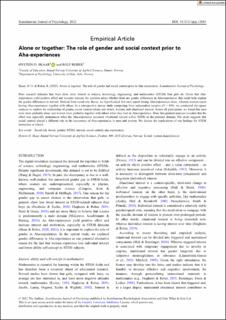Alone or together: The role of gender and social context prior to Aha-experiences
Peer reviewed, Journal article
Published version
Date
2022Metadata
Show full item recordCollections
Abstract
Prior research indicates that boys show more interest in science, technology, engineering, and mathematics (STEM) than girls do. Given that Aha-experiences yield positive affect and increase interest, the question arises whether there are gender differences in Aha-experiences that could help explainthe gender differences in interest. Derived from social role theory, we hypothesized that men report having Aha-experiences alone, whereas women reporthaving Aha-experiences together with others. In a retrospective survey study comprising three independent samples (N=899), we conducted chi- squareanalyses to explore the relationship of gender, social context (alone; not alone), domain, and situational interest. Across all participants, we found that menwere more probably alone and women more probably together with others when they had an Aha-experience. Morefine-grained analyses revealed that theeffect was especially pronounced when the Aha-experience increased situational interest within STEM or the personal domain. The study suggests thatsocial context played a different role in the occurrence of Aha-experiences in men and women. We discuss the implications of ourfindings for STEMinstruction at school.

